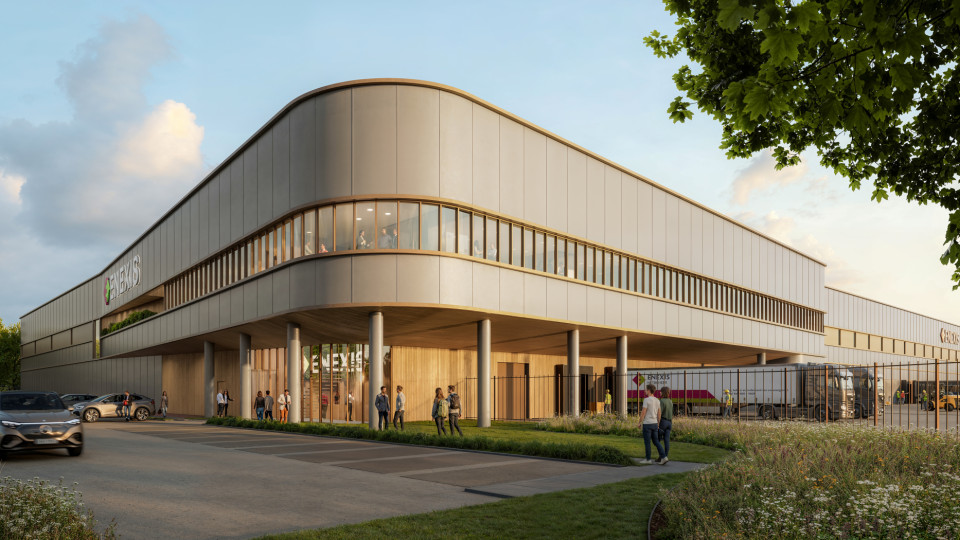At the Valschermkade, located in the creative industrial area de Schinkel within the Amsterdam ring road A10, we developed a new sustainable office building. A former steel workplace was completely renovated and converted into a sustainable office for Paul de Ruiter Architects where sustainability came first.
A green heart
With the renovation of an existing industrial building, Paul de Ruiter Architects made its first sustainable choice. The foundation, the walls, and the roof of the hall formed the basis for the transformation of the 1980 industrial hall into accommodation for the architectural firm. The old brick office that stood in front of the hall has made way for a fully glazed facade, which allows for plenty of daylight at the workstations, and the spot where the office used to now make way to park our bicycles, but above all a fantastic place to work and have lunch outside when the weather is nice.
Recycled and non-toxic biobased materials.
In the 6 meters high existing hall, a light warehouse floor was placed on the existing foundation, creating a large number of additional workplaces. To get extra daylight into the workspace, an atrium was created with a rooftop light. In this atrium an artwork c.q. tree table was designed by Anouk Vogel, which has become the social green heart of the building. For the construction materials, recycled and non-toxic biobased materials were used and the furniture is entirely according to the C2C principle. Instead of plastic Corona screens, the interior has planters that separate the workplaces.
Cold and heat storage in the soil.
We have designed our office according to the Trias Energetica principles where we have insulated heavily and get our energy from a sustainable mono source under our office. At 105 meters deep in the ground, we have stored the cold air of the winter which we use for cooling in the summer. The heat of the summer is also stored in the ground but at a depth of 70 meters. This heat is used in the winter to heat the building. Heat pumps support the process of cooling and heating. The building was recently calculated by an installation consultancy and has an A++ energy label.
Chameleon skin
The front facade is equipped with movable screens that we developed in 1999 for the Deys villa. During the day, when open, they form an awning and ward off the sun, and at night they go down and seal the facade against burglary. The movable facade consists of metal sheets, which are perforated to maintain an open character when closed. When opened, the shutters rise like a canopy above the glass facade.
Project details
Gegevens
| Gross floor area | 970 m2 |
| Program | Sustainable multi-tenant office |
| Start design | June 2007 |
| Start construction | May 2008 |
| Completion | May 2009 |
| Location | De Schinkel, Amsterdam |
Ontwerpteam
| Client | Paul de Ruiter Architects |
| Project architect | Paul de Ruiter |
| Project team | Roel Rutgers, Annika Hermann, Nicolle Flagiello, Willem Jan Landman |
| Adv․ installations | Stauffer Technical Consultancy |
| Contractor | Bouwbedrijf M.J. de Nijs en Zonen |
| Project leader | Willem Jan Landman |
| Constructor | Broersma |
| Artwork | Anouk Vogel |
| Adv․ costs | Bouwhaven Consultants |
| W-Installer | ETB Vos |
| E-Installer | Interdaad Installbouw |
| Interior | Paul de Ruiter Architects |
| Photography | Pieter Kers |














